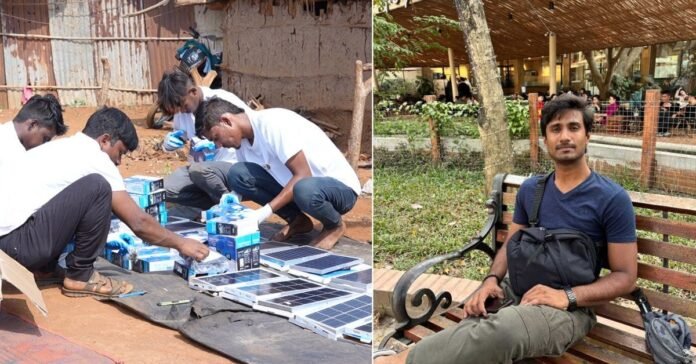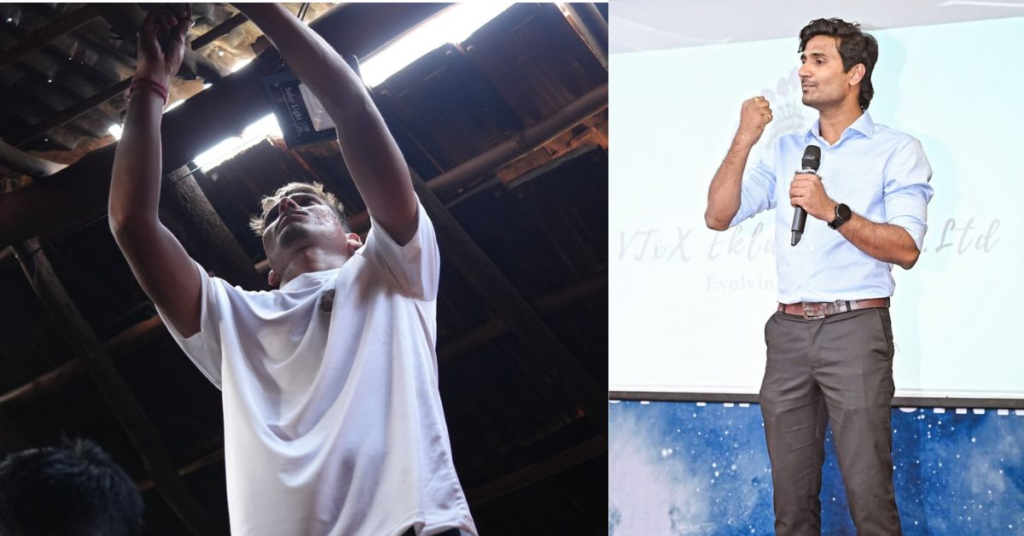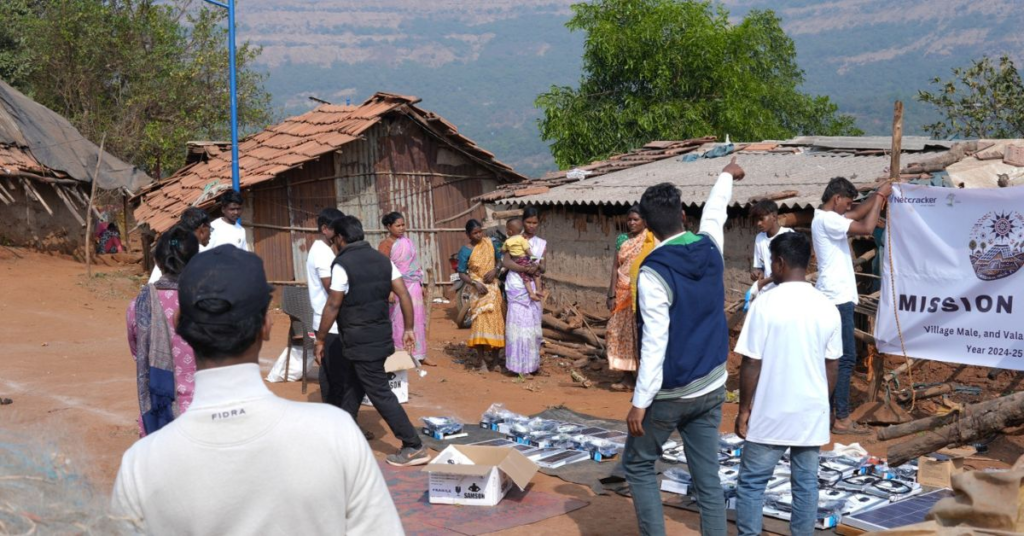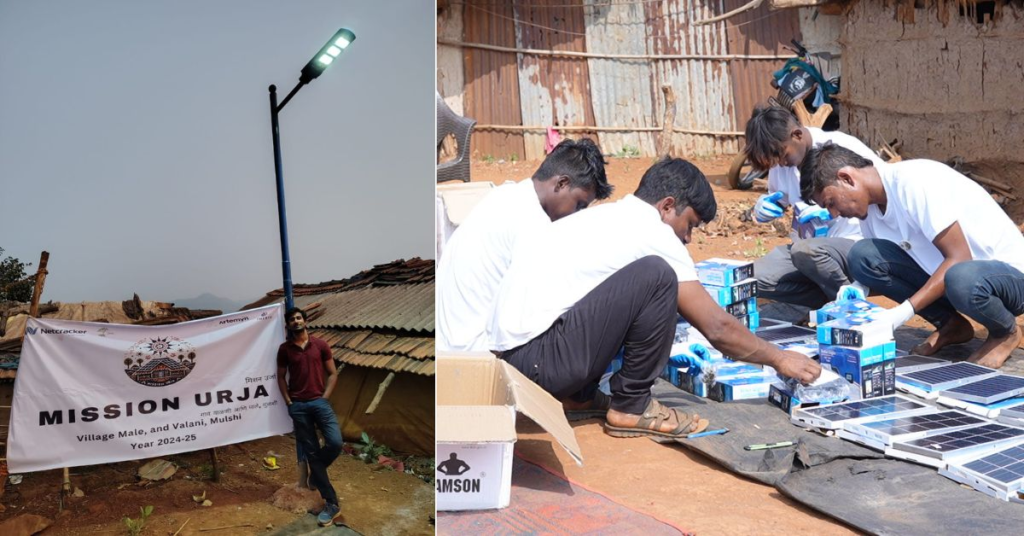
From Darkness to Dignity: How Solar Power is Illuminating the Lives of Maharashtra’s Tribal Communities
Imagine a village where nightfall brings an impenetrable darkness. No streetlights, no bulbs glowing through the windows, just the flicker of kerosene lamps and the occasional flash of lightning in the monsoon sky. For the Katkari and Kunbi tribal communities of Maharashtra, this was not a temporary inconvenience—it was daily life.
“In our village, the day ended with the sunset. By 7:30 pm, darkness ruled,” says Sonu Shitaram Jadhav, a resident of Munshi village. Nighttime meant vulnerability—wild animals lurked nearby, crime often found cover in the shadows, and safety was a hope rather than a guarantee.

Most villagers worked as labourers in brick kilns, earning just Rs 120 a day. Generations had adapted to life without electricity. But about six months ago, a spark—quite literally—changed everything.
Enter Mission Urja, the brainchild of Tanveer Inamdar, a 28-year-old mechanical engineer from Pune. Leaving behind a lucrative career in multinational companies, Tanveer founded the TREEI (Technology Reuse Environment Empowerment Innovation) Foundation in 2018. Initially focusing on water-fetching solutions, he quickly realized that the lack of electricity in these communities was an even more pressing issue.
“In every field visit, we saw the same thing—pitch-black nights and an overwhelming dependence on kerosene. That’s when we knew we had to act,” Tanveer explains.
Lighting Up Lives—One Solar Panel at a Time

By 2022, Mission Urja was officially underway. Using a blend of solar and hydroelectric power tailored to the geography of each village, Tanveer and his team brought innovative, portable power solutions to places where electricity had never dared to go.
Highland villages used waterfall-powered hydro systems. For nomadic and semi-permanent dwellings, TREEI Foundation provided small, foldable solar panels that weighed just 3 kilograms and could be clipped onto any surface. These panels powered LED lights, fans, and mobile phone chargers, functioning automatically as the sun went down.
“Many families don’t own the land they live on, so permanent installations made no sense. Portability was key,” says Tanveer.
The cost of bringing light to one home ranges from Rs 16,000 to Rs 42,000. But for the tribal residents, it’s completely free—funded through CSR partnerships with companies like Netcracker Technologies, Imerys Group, Artymn, and Persistent Foundation.
The Human Impact: A New Lease on Life

What does light change? Everything.
“Now, I can charge my phone, turn on a fan, and my kids can study after dark,” beams Sonu. Sanjay Gopinath Pawar, another resident, adds, “Wild animals no longer come near our huts. Our dogs are safer. We are safer.”
Evenings, once dreaded, are now opportunities to gather, chat, and build community. The simple act of turning on a light has added hours of productivity, safety, and connection.
Building Systems of Sustainability

To make the model truly self-sustaining, Tanveer established Urja Committees—local energy management groups comprising three men and two women. Additionally, 10 village youth were trained in technical maintenance.
Each household pays a nominal fee of Rs 10 to Rs 50 monthly, which is saved in the committee’s bank account for future maintenance. “The idea is that after five years, when the warranty expires, they have enough saved to repair or replace the systems. It’s a full-circle model,” Tanveer explains.
In the past, some families paid up to Rs 500 a month to ‘borrow’ electricity from wealthier neighbours’ illegal connections. “They were paying exorbitant prices for just a single bulb. Now, they have ownership, dignity, and real savings,” says Tanveer.
Challenges and Forward Momentum

Of course, progress hasn’t been without hurdles. Political pushback and lack of cooperation from local authorities occasionally stalled the project. “Some tried to claim credit or blocked efforts for their own gain. That’s the hardest part,” Tanveer admits.
Still, the mission marches on. So far, Mission Urja has reached 945 families across villages like Gelgani, Ghevande, DhopeKhind, and Chandavne. 395 of those now thrive on hydroelectricity. Another 342 use portable solar panels, while 208 enjoy permanent solar installations.
“This isn’t just about electricity,” says Tanveer. “It’s about reclaiming control over one’s life. It’s about dignity.”
The Road Ahead
For these tribal communities, light is more than illumination—it’s transformation. Children now study late into the evening. Women feel safer. Families gather after dark. A way of life has been reshaped.
“Imagine visiting a village that’s pitch black one month and glowing with life the next,” Tanveer smiles. “It’s surreal. It’s magical. And it’s just the beginning.”
By 2028, Mission Urja aims to electrify 100 more villages. If light symbolizes hope, then hope now dances freely through the once-dark alleys of Maharashtra’s tribal heartland, carried by a young engineer’s dream and a community’s undying spirit.

